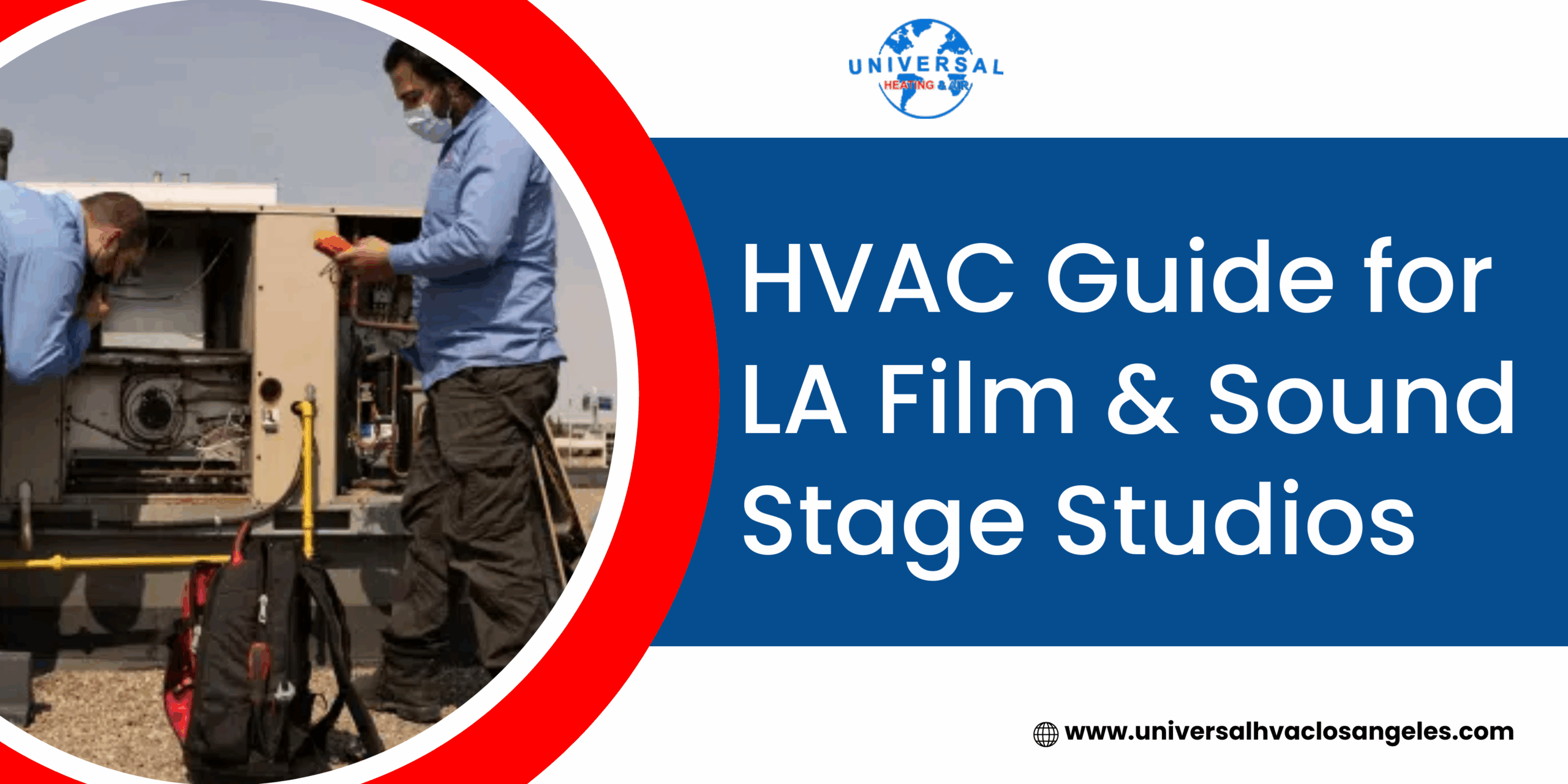Basic office HVAC systems don’t cut it in film environments. When studios try to save money with standard equipment, here’s what goes wrong:
- Equipment overheats during those marathon shooting days
- Noisy air handlers mess up audio takes
- Uneven temperatures fog up camera lenses
- Poor air quality leaves your crew feeling sluggish
Studio environments are way tougher on HVAC systems than typical commercial spaces. You’ve got massive lights pumping out serious heat. Crews of 50+ people add body heat and humidity. And everything runs 12-16 hours straight without a break.
Sound Stage HVAC Headaches
Recording audio creates some unique problems. Every little mechanical noise becomes your worst enemy.
Noise Issues You’ll Face:
- Ductwork vibrations travel through the whole building
- Fan motors create those low hums that microphones always pick up
- Air rushing through vents makes whooshing sounds
Professional sound stages need super-quiet HVAC equipment – we’re talking hospital-grade noise control. Variable speed drives that automatically adjust fan speeds work great. So do oversized ducts that can move air without creating a racket.
Some smart studios actually install two separate HVAC systems. One runs during setup and breaks when noise doesn’t matter. Then a whisper-quiet system takes over during actual filming.
Getting Temperature and Humidity Just Right
Film equipment can be really finicky about environmental conditions. Cameras and digital storage have pretty narrow comfort zones.
What You Need to Control:
- Keep temperatures steady between 68-72°F
- Maintain 45-55% humidity consistently
- Avoid quick temperature changes that cause condensation
- Plan for all that heat from lighting equipment
Your Commercial HVAC Los Angeles contractor needs to think differently about heat load calculations for studios. Standard commercial formulas don’t account for how intense film lighting gets or how production schedules work in starts and stops.
System Sizing That Actually Works
Studios need HVAC systems that can handle crazy load swings. During setup? You barely need any cooling. But once filming starts with full lighting rigs, the heat load goes through the roof.
Smart design includes:
- Modular systems that turn on and off based on what you need
- Separate ventilation for equipment rooms
- Backup cooling for critical spaces
- Zone control for different areas of big sound stages
Paying for Your Studio HVAC
Professional studio HVAC systems cost way more than standard commercial setups. All that specialized equipment, noise control, and precision controls really add up.
HVAC Financing Los Angeles options let you spread those costs over time instead of paying everything upfront. Many contractors have financing programs designed specifically for commercial projects. This way, you can install the right system now instead of settling for cheaper equipment that won’t do the job.
Leasing works really well for studios that regularly upgrade their facilities. You can refresh your HVAC technology every few years without huge upfront costs.
Bottom Line
Your studio’s HVAC system directly affects both production quality and crew comfort. It’s worth investing in proper design and equipment from day one. Trust me – the cost of getting it wrong (ruined takes, damaged equipment, unhappy talent) is way more expensive than doing it right the first time.



